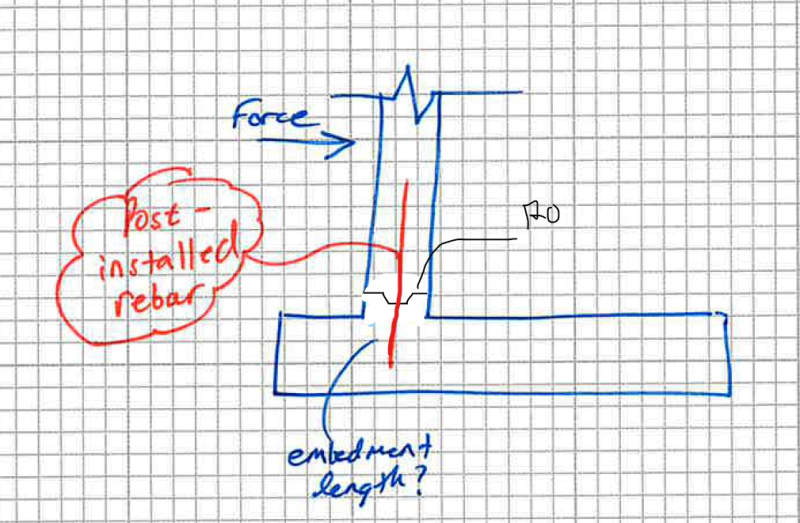ScratchyFilm
Structural
I was doing a bit of research this morning and see that deformed rebar can be post installed using the same design criteria as anchor bolts.
My understanding of anchor bolts is that you are always designing them using tension and shear forces for the failure methods. In the attached image, there is a case where there would be moment on the corner of the vertical column... Would design of post installed rebar using anchoring principles work for a case like this, or does a moment force change the requirements for the development of the rebar?
Additionally, when you guys design post installed rebar like this, do you just take the recommendations of the supplier of the adhesive for necessary embedment depth?
Thanks in advance!
My understanding of anchor bolts is that you are always designing them using tension and shear forces for the failure methods. In the attached image, there is a case where there would be moment on the corner of the vertical column... Would design of post installed rebar using anchoring principles work for a case like this, or does a moment force change the requirements for the development of the rebar?
Additionally, when you guys design post installed rebar like this, do you just take the recommendations of the supplier of the adhesive for necessary embedment depth?
Thanks in advance!


![[surprise] [surprise] [surprise]](/data/assets/smilies/surprise.gif)